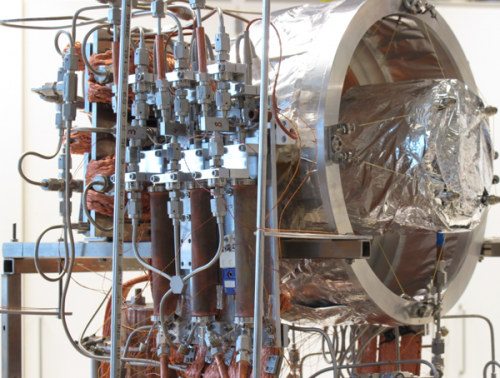Unravelling the secrets of the universe: Researchers develop new cooling technology for optical detectors on spacecraft

In a project commissioned by the European Space Agency, researchers at the University of Twente have developed a novel cooling technique for optical detectors on spacecraft. Using this technology, it is possible to detect extremely weak signals that contain information about the history of the universe.
These space signals have covered enormous distances and originate from extremely cold sources. The wavelengths involved extend far into the infrared. In order to measure cold radiation, optical detectors must be cooled to a few degrees above absolute zero (-273°C).
Current cooling systems use mechanical compressors. However, these create vibrations that can impair the performance of these sensitive optical instruments. University of Twente researchers from Professor Marcel ter Brake's chair of Energy, Materials and Systems (Faculty of Science and Technology) have demonstrated a working hydrogen gas cooler. When used in combination with a helium-based cooler, this can reach a temperature of five degrees above absolute zero during space missions, with no vibration whatsoever.
European Space Agency
The University of Twente has been cooperating with the European Space Agency in this field since 2001. The final meeting of those involved in the hydrogen cooler project will take place at ESA, in Noordwijk, on Friday 15 March. As this clearly indicates, the system has been successfully tested and is now operational. In cooperation with Dutch Space, the cooler will be modified to withstand the forces generated during lift-off. A sum of four hundred thousand euros has been reserved for further development work, in the form of a new 18-month ESA project.
Mega telescope
Besides space applications, this vibration-free cooling technology is undergoing further development for use in the E-ELT (European Extremely Large Telescope). Located in Chile, this telescope will be the world's biggest eye on the sky when it commences operation in 2018. The cooling technology developed by the University of Twente is ideally suited to that telescope's METIS instrument, which will detect signals from cold sources. The E-ELT's main mirror will be about forty metres in diameter. The telescope's overall construction costs are estimated at nearly a billion euros.
Provided by University of Twente





















